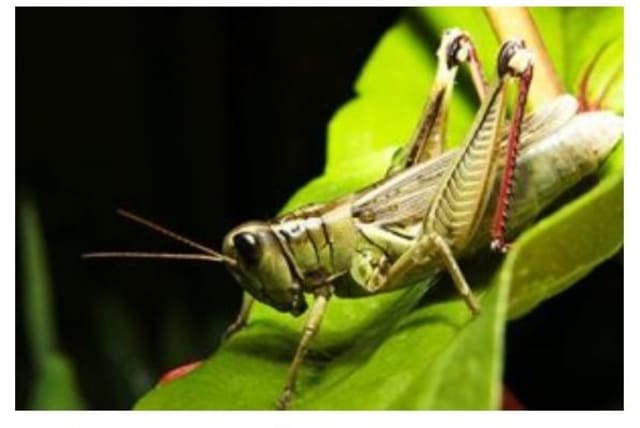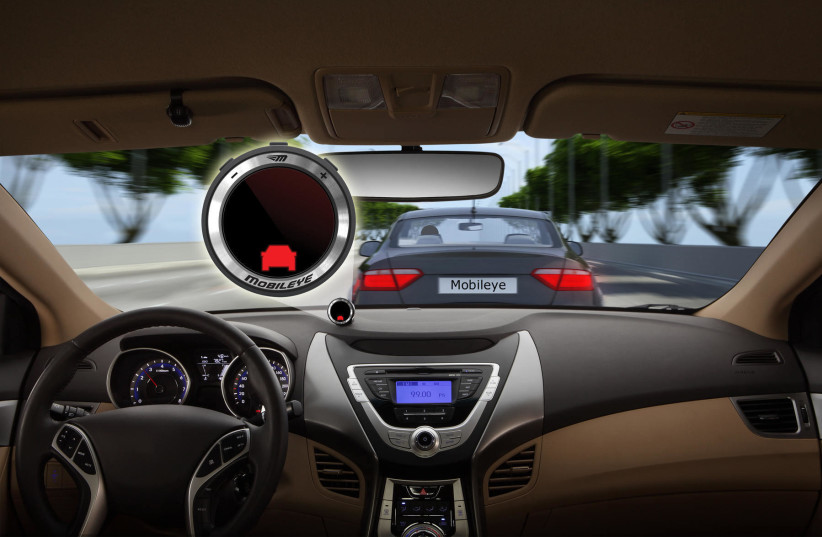How locusts can help us prevent car crashes

Locusts and flies can teach us how to reduce the number of vehicle crashes through obstacle-avoiding neural circuits.
We can learn a lot about preventing car crashes from bugs. Despite only about a quarter of car travel occurring when it’s dark, almost half of the fatal accidents occur after sunset.
As our vehicles become more advanced and even autonomous, the ways of detecting and avoiding these collisions must evolve too. Current systems are often complicated, resource-intensive or work poorly in the dark.
Engineers at Penn State University have designed a simple, power-saving collision detector inspired by the way insects avoid bumping into one another.
They described their study in ACS Nano, an online journal of the American Chemical Society, under the title “Insect-Inspired, Spike-Based, in-Sensor, and Night-Time Collision Detector Based on Atomically Thin and Light-Sensitive Memtransistors.”
Insects easily avoid collisions
Insects, including locusts and flies, can easily avoid collisions with each other without relying on fancy software or light-detection and ranging (LiDAR) sensors, even at night. Instead, they engage certain obstacle-avoiding neural circuits that are highly efficient and could inspire next-generation, collision-avoidance systems (CASs).
To alert the driver or, alternatively, the maneuvering system of an autonomous vehicle, current technologies utilize expensive solutions, such as light detection, and CASs are already integrated in vehicles, automatically braking when an object gets too close. Some operate by analyzing an image of the space around the car, but in conditions like heavy rain or low light, the image is not as clear. To make up for it, complicated signal processors are used to make sense of what is still visible.
Another method is to install either radar or LiDAR sensors, but these are difficult to miniaturize and need a lot of power. In the end, even though these make driving the vehicle safer, these instruments can add unnecessary weight, energy requirements and complications.
So, Prof. Saptarshi Das and colleagues wanted to create an insect-inspired collision detector adapted to sense vehicles that was effective, safe and consumed less power than its predecessors.
An algorithm based on neural circuits
First, the team designed an algorithm based on the neural circuitry insects use to avoid an obstacle. Instead of processing an entire image, they only processed one variable – the intensity of a car’s headlights. Without the need for an onboard camera or image sensor, the detection and processing units were combined, making the overall detector smaller and more energy efficient.
The sensor was comprised of eight photosensitive “memtransistors” constructed from a layer of molybdenum disulfide (MoS2) and organized onto a circuit. It took up 40 square micrometers and used a few hundred picojoules (one million millionth of a joule of energy) – tens of thousands of times less than existing systems.
Finally, in real-life, nighttime scenarios, the detector could sense a potential two-car accident two to three seconds before it happened, leaving the driver with enough time to take critical corrective action. The researchers said this novel detector could help make existing CASs better and safer.
Jerusalem Post Store
`; document.getElementById("linkPremium").innerHTML = cont; var divWithLink = document.getElementById("premium-link"); if (divWithLink !== null && divWithLink !== 'undefined') { divWithLink.style.border = "solid 1px #cb0f3e"; divWithLink.style.textAlign = "center"; divWithLink.style.marginBottom = "15px"; divWithLink.style.marginTop = "15px"; divWithLink.style.width = "100%"; divWithLink.style.backgroundColor = "#122952"; divWithLink.style.color = "#ffffff"; divWithLink.style.lineHeight = "1.5"; } } (function (v, i) { });

